 MyDogBreeds
MyDogBreeds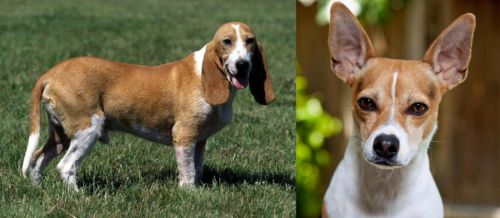 Schweizer Niederlaufhund is originated from Switzerland but Rat Terrier is originated from United States. Schweizer Niederlaufhund may grow 7 cm / 3 inches higher than Rat Terrier. Schweizer Niederlaufhund may weigh 11 kg / 25 pounds more than Rat Terrier. Both Schweizer Niederlaufhund and Rat Terrier has almost same life span. Both Schweizer Niederlaufhund and Rat Terrier has same litter size. Both Schweizer Niederlaufhund and Rat Terrier requires Low maintenance.
Schweizer Niederlaufhund is originated from Switzerland but Rat Terrier is originated from United States. Schweizer Niederlaufhund may grow 7 cm / 3 inches higher than Rat Terrier. Schweizer Niederlaufhund may weigh 11 kg / 25 pounds more than Rat Terrier. Both Schweizer Niederlaufhund and Rat Terrier has almost same life span. Both Schweizer Niederlaufhund and Rat Terrier has same litter size. Both Schweizer Niederlaufhund and Rat Terrier requires Low maintenance.
 Originating in Switzerland, the Schweizer Niederlaufhund was established around 1900, when hunting became restricted to districts. The Swiss hunter needed a slower dog for the limited territory they could hunt in. Crossing selected Schweizer Laufhunds with Basset Hounds and other selected smaller, short legged hounds developed the Schweizer Niederlaufhund. By 1905 there was already a Schweizer Niederlaufhund Club.
Originating in Switzerland, the Schweizer Niederlaufhund was established around 1900, when hunting became restricted to districts. The Swiss hunter needed a slower dog for the limited territory they could hunt in. Crossing selected Schweizer Laufhunds with Basset Hounds and other selected smaller, short legged hounds developed the Schweizer Niederlaufhund. By 1905 there was already a Schweizer Niederlaufhund Club.
The Niederlaufhund became one of the best hunting dogs in the world, with its powerful body and ability to outhunt the Laufhund in tracking big game. Slower of course than the Laufhund it has a great sense of smell and an ability to easily find wounded animals. There are a few varieties, just like with the Swiss Hound again mostly because of their coloring. The Luzerner Niederlaufhund, the Jura Neiderlaufhund, and the Schwyzerlaufhund. They have musical voices that they use to communicate with the hunters and each other as well as that amazing sense of smell. They can hunt for hours without tiring and without much information from the hunter.
They are a cross breed not recognized by the larger kennel club such as the AKC and the UKC. They are recognized by the Dog Registry of America, Inc. (DRA), the American Canine Association Inc. (ACA) and most importantly by the Federation Cynologique Internationale (FCI). This last one is important because it could lead to recognition as a new breed by the UKC and the AKC.
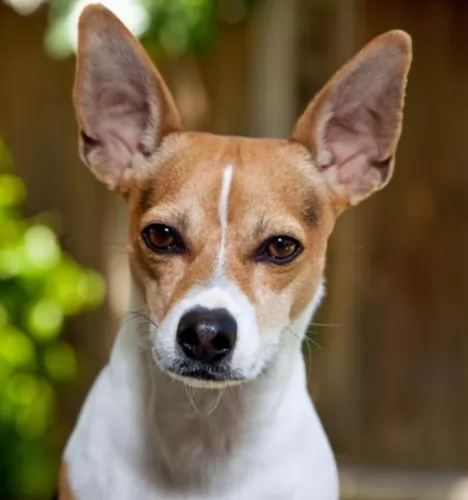 Known also as the American Rat Terrier or even as the Rattie, this American dog breed is a farm dog, common on family farms during the 1920's and 1930's.
Known also as the American Rat Terrier or even as the Rattie, this American dog breed is a farm dog, common on family farms during the 1920's and 1930's.
Miniatures or Standards, these dogs are also recognized by the American Kennel Clubs and thought of today as a multi-purpose companion dog.
He is an American dog breed, having come about from Fox Terriers, Old English White Terriers, Bull Terriers, Manchester Terriers and others. Whippets and Italian Greyhounds have also come into the mix to add speed as a characteristic.
The Rat Terrier started to decline in numbers, and by the 1950's the numbers of the dog were so low that breeders stepped in to restore numbers.
 The Schweizer Niederlaufhund is a medium size, short dog. They look like their cousins, the Schweizer Laufhund but smaller. Their body is just slightly longer than it is tall, so you are left with the impression of a mostly square dog. The Niederlaufhund is well put together, with strong legs, a noble head, long droopy ears, broad chest, and a low held tail.
The Schweizer Niederlaufhund is a medium size, short dog. They look like their cousins, the Schweizer Laufhund but smaller. Their body is just slightly longer than it is tall, so you are left with the impression of a mostly square dog. The Niederlaufhund is well put together, with strong legs, a noble head, long droopy ears, broad chest, and a low held tail.
The Small Lucerne Hound has a white cote with smooth speckles of black or gray making them appear to be blue.
The Small Bernese Hound has a tricolor coat of white, tan and black. There are tan marks on the eyebrows. There is a wire haired Small Bernese as well. He has a short beard.
The Small Schwyz Hound is smooth coated in white with orange or yellow-red patches. The wired haired version is extinct.
The Small Jura Hound is a single coated dog with a black coat and tan marking above his eyes as eyebrows as well. He might have some white as well.
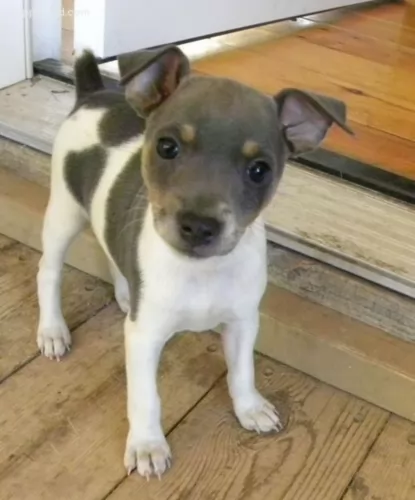 There are different sized Rat Terriers, but the mid-sized one stands roughly between 20 and 36cm in height and weighs between 3 and 4kg.
There are different sized Rat Terriers, but the mid-sized one stands roughly between 20 and 36cm in height and weighs between 3 and 4kg.
The single coat is short and smooth and comes in colors such as tan, grey, chocolate, black and in solid colors too such as white. They are mostly in tri-colors - white, tan, black. Ticking is also seen.
With his short coat he is seen as a low maintenance dog even though he is still a shedder, with heavier seasonal shedding.
The ears can sometimes be erect, otherwise they are half-erect, half floppy. The tail has always been traditionally docked, giving him a nice, distinctive look, but today the tail is often just left un-docked. It isn't unusual for a puppy to be born with a short or long tail.
Intelligent, wary, loyal, loving, playful but stubborn, your Rat Terrier is a little bit wary around strangers. Training and socialization can be good for this dog and help him t be obedient and well mannered in all situations. These dogs also want to please. He is an active dog too and makes a great playmate for children, getting on well with kids and other pets in the home.
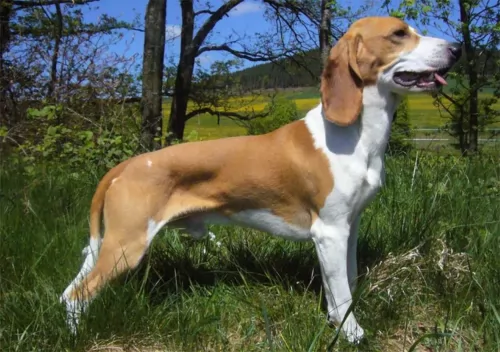 Children friendliness – yes, they are but use caution around small children and small prey.
Children friendliness – yes, they are but use caution around small children and small prey.
3. Adaptability - needs room to run and explore – is very frustrated when confined.
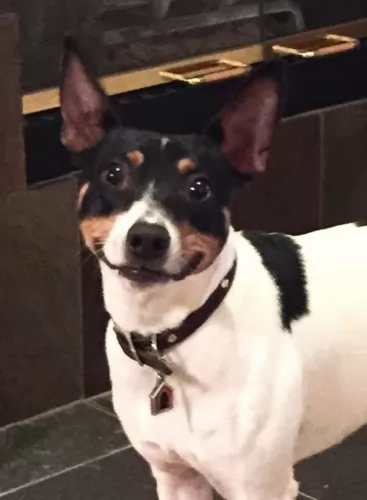 The Rat Terrier is such a clever, bright dog. These characteristics make him an excellent watchdog with strong jaws for his role of getting rid of rats on farms.
The Rat Terrier is such a clever, bright dog. These characteristics make him an excellent watchdog with strong jaws for his role of getting rid of rats on farms.
Even though he is a small dog, he isn’t particularly suited to life in the city on a small property as he has quite a shrill bark.
Because of him being small to medium in size, he is well suited to many homes, but you just have to watch out in the city if you live close to your neighbors as he is fairly noisy and active.
He would love a large property where he can just be himself. Provide him with the right home, and you’l have a friend for life.
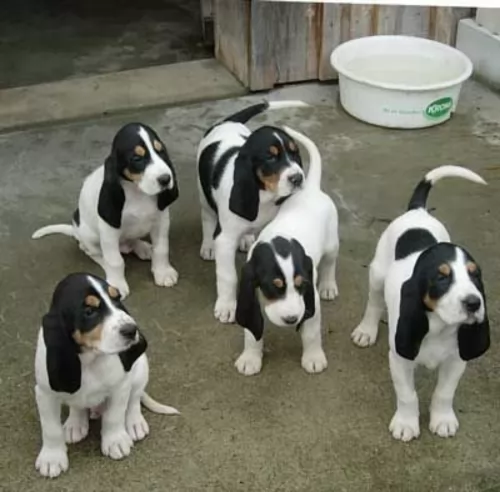 The Niederlaufhund Is prone to a very medical issues to keep an eye on. They include:
The Niederlaufhund Is prone to a very medical issues to keep an eye on. They include:
• Hip Dysplasia – This comes from hip joints that are not well formed and cause reduced mobility and pain. Parents can be tested before the dogs are bred to make sure their hips are good, and that dysplasia will not be passed to puppies. This dysplasia can cause arthritis and even lameness.
• Ear Infections – With long drooping ears it is easy for the dog to acquire ear infections. This is even more so for a hunting dog like the Niederlafhund. It is important to clean the dog’s ears on a regular basis.
 Rat Terriers are generally feisty, healthy dogs who, with good care, can live to the ripe old age of 16, 17 or 18 years of age.
Rat Terriers are generally feisty, healthy dogs who, with good care, can live to the ripe old age of 16, 17 or 18 years of age.
Just like with many other dogs, he can develop some of the more common dog illnesses there are. If you're opting for a puppy, find a good, reputable breeder.
It can be tricky trying to decide what kind of allergies are causing such problems with your pet. A skin allergy can cause a lot of itchiness and pain for your canine friend and he will bite and lick on the affected spots and make the situation worse. You will need to get him to the vet for some kind of treatment, as such an ailment can drive him mad.
This is a common problem in dogs, with the kneecap or patella being dislocated. It can cause a lot of pain and can be crippling for your dog.
 1Feeding the puppy - give 1 cup per day of high quality dog food divided into 3 meals.
1Feeding the puppy - give 1 cup per day of high quality dog food divided into 3 meals.
2.Feeding the adult – give one and one half cups of high quality dog food divided into 2 meals.
4. Games and Exercises – needs a lot of daily exercise and loves field trials, running and activities like barn hunt.
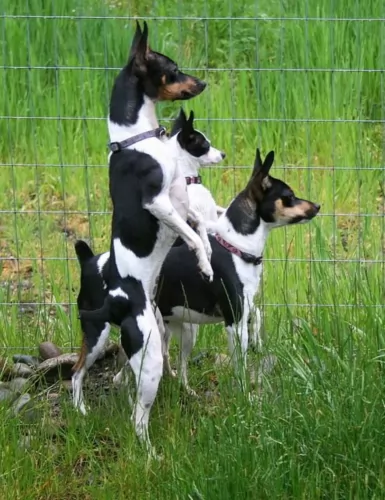 Your Rat Terrier can easily reach 16, 17 or 18 years of age with good food. While you do get some excellent commercially manufactured dog foods, you want to add variety by including some nutritious home-made food too.
Your Rat Terrier can easily reach 16, 17 or 18 years of age with good food. While you do get some excellent commercially manufactured dog foods, you want to add variety by including some nutritious home-made food too.
Boiled chicken, brown rice or pasta and spinach, sweet potatoes and carrots are a healthy choice for your pet. Chop it up and add it into the dry kibble a couple of times a week.No complications - just plain and simple - the way dogs love it.
Some raw meat added in from time to time will help his skin and coat remain healthy. Never leave him without a constant source of fresh, cool water.
The Rat Terrier is an active dog. He just loves to dig too, so if you live close to a beach, he will love running and digging in the sand. If this isn’t possible, he will be happy to be taken on walks with you and maybe for a run in the park.
He loves all ball games and running after a frisbee, and he’s so clever, maybe you can even teach him to fetch the frisbee for you.
The Rat Terrier is a low-maintenance dog and only requires having his coat brushed twice a week.
Check inside his mouth for bad teeth. You can even brush his teeth with special canine toothpaste and brush to remove tartar buildup.
Keep his nails trimmed too if he doesn’t wear them down naturally so as to prevent them hooking on things and ripping into the flesh.
Check inside your dog’s ears too. If you’re not experienced with trimming dog nails or cleaning inside dog’s ears, your vet or professional groomer will do it for you.
During these grooming sessions with your Rat Terrier, check for fleas and ticks as well as for any sores or new lumps. Also, his eyes should be clear and bright with no discharge or redness.